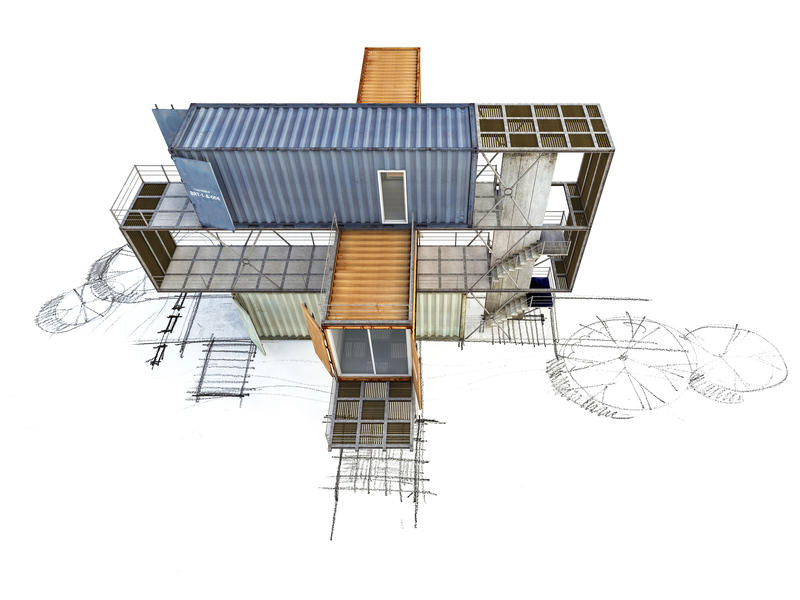Unlock Peace with Decluttering and Minimalist Living
Discover how embracing the principles of decluttering and minimalist living can transform your life, bringing more tranquility, focus, and joy to your daily existence. Whether you are overwhelmed with clutter, stressed by chaos, or simply ready for a fresh start, this comprehensive guide will help you unlock lasting peace through the art of minimalism and tidy living.

What is Minimalist Living and Decluttering?
Minimalist living is an intentional approach to life that focuses on simplicity, mindfulness, and purposeful choices. It involves owning fewer possessions, reducing distractions, and cultivating a home and lifestyle that emphasize quality over quantity. Decluttering is a foundational process in this journey, where you systematically remove unnecessary items from your life, creating space both physically and mentally.
- Minimalism encourages you to keep only those items and commitments that truly add value to your life.
- Decluttering is the practical step of sorting through possessions and letting go of what is no longer needed.
- Peace is achieved by eliminating stress-inducing chaos and fostering a serene environment.
The Difference Between Decluttering and Minimalist Living
While these concepts often go hand in hand, they are not interchangeable. Decluttering is a process, whereas minimalist living is an ongoing lifestyle choice. Decluttering can be a one-time action, but embracing minimalism requires a sustained mindset shift. Ultimately, living minimally supports long-term peace by continually aligning your environment and habits with your core values.
The Benefits of Decluttering and Minimalist Living
- Reduces Stress: Clutter is proven to increase anxiety and distractibility. By minimizing mess, your mind becomes clearer and calmer.
- Improves Focus: A tidy, organized space promotes concentration and mental clarity, helping you achieve your goals with less distraction.
- Enhances Well-being: Minimalist spaces are often more peaceful, inviting, and conducive to relaxation.
- Saves Time and Money: You spend less time searching for things and reduce unnecessary purchases, leading to financial savings.
- Environmental Sustainability: Consuming less means less waste and a lower carbon footprint, promoting environmentally conscious living.
How Does Minimalist Living Lead to Inner Peace?
Minimalist living isn't just about aesthetics. By intentionally reducing clutter, you free yourself from the burden of material possessions, allowing space for what truly matters--relationships, experiences, and personal growth. The peace that follows is both internal and external:
- Emotional Peace: Letting go of sentimental clutter can be liberating. Minimalism encourages self-reflection, helping you distinguish between what's valuable and what's holding you back.
- Physical Serenity: An uncluttered environment fosters relaxation and makes routines like cleaning and organizing much more manageable.
- Mental Clarity: Fewer distractions mean more room for creativity, thoughtful decision-making, and mindfulness.
Practical Steps to Declutter Your Life
1. Start with a Clear Vision
Before diving into decluttering, define your goals. What are you hoping to achieve? More time with family, a peaceful home, or a stress-free morning routine? Visualizing your desired lifestyle will inspire action and sustain motivation throughout the journey.
2. Tackle One Area at a Time
Decluttering your entire home at once can feel overwhelming. Instead, focus on one room or even one drawer. Celebrate small victories and use the momentum to keep going.
- Begin with easy areas: Start with a bathroom, hallway, or a single closet--places where emotional attachments are minimal.
- Advance to more challenging spaces: Bedrooms, kitchens, and living rooms may require more thought and effort.
3. Use the Three-Box Method
This method streamlines the process:
- Keep: Items you need or love
- Donate/Sell: Items in good condition that no longer serve you
- Discard: Broken, unusable, or expired items
4. Ask the Key Decluttering Questions
For each item, ask yourself:
- Have I used this in the last year?
- Does this item bring me joy or serve a meaningful purpose?
- Would I buy this again?
5. Organize What Remains
Assign each item a dedicated place. Use simple storage solutions and label where necessary to maintain lasting order. Minimalist living thrives on functionality and ease of access.
Transitioning from Decluttering to Minimalist Living
The Minimalist Mindset
After decluttering, it's important to adopt the mindset of a minimalist to prevent accumulation and maintain peace. This involves:
- Intentional Consumption: Consider each purchase carefully. Does it add value to your life?
- Quality Over Quantity: Opt for well-made, multi-functional items over accumulating cheap, single-use goods.
- Regular Evaluation: Periodically reassess your possessions and habits to ensure they align with your goals.
- Simplifying Commitments: Minimalism also applies to your schedule. Prioritize activities that matter and let go of obligations that drain you.
Practical Tips for Maintaining a Minimalist Home
- One In, One Out Rule: For every new item, remove an old one--you'll prevent clutter from creeping back.
- Use Clear Surfaces: Keep countertops and tables uncluttered for a visually calming effect.
- Create Functional Stations: Designate specific areas for daily activities (entryway storage, office zone, reading nook) and keep only what is essential in each space.
- Embrace Digital Minimalism: Declutter your devices--unsubscribe from unnecessary emails, organize files, and delete unused apps.
Minimalism for Families and Shared Homes
Getting Everyone On Board
Minimalist living isn't just for individuals; it can profoundly benefit families and those living with roommates. Here's how to foster a collective spirit for decluttering and minimalism:
- Communicate Benefits: Discuss the advantages of peaceful, organized living. Highlight the potential for more quality family time and fewer arguments over chores.
- Involve Everyone: Include children or housemates in the process. Assign areas, make joint decisions, and celebrate progress together.
- Lead by Example: Your actions and mindset will inspire others to follow suit.
Tackling Sentimental Items
Photographs, childhood mementos, and inherited treasures can be the hardest to let go. Practice gentle minimalism by:
- Setting Limits: Designate a box or drawer for keepsakes--when it gets full, it's time to reassess.
- Digitizing Memories: Scan photos and documents to preserve them without consuming physical space.
- Creating Display Areas: Curate a small shelf or wall for meaningful items instead of keeping them in storage.
The Psychological Impact of Decluttering and Minimalist Living
How Clutter Affects Your Mind
Scientific studies show that excessive clutter increases cortisol (the stress hormone) and reduces productivity. A visually busy environment divides your attention, making it harder to focus and relax. In contrast, decluttered spaces provide a sense of control and order, lowering anxiety and increasing peace of mind.
Cultivating Mindfulness Through Minimalism
Minimalist living is closely linked with mindfulness. As you pare down possessions and commitments, you gain greater awareness of your needs and desires. This process teaches you to be present, grateful, and intentional, forming habits that enhance your quality of life.
Minimalism and Decluttering Beyond the Home
Minimalist Living at Work
- Organize Your Desk: Keep only essential tools on your workspace to minimize distraction and streamline productivity.
- Prioritize Tasks: Focus on high-impact projects, and learn to say "no" to unimportant commitments.
- Streamline Digital Files: Adopt simple folder structures and regularly delete outdated documents.
Adopting Minimalist Habits in Daily Life
- Curate Your Social Media: Unfollow accounts that don't inspire or serve you.
- Simplify Your Wardrobe: Choose versatile clothing and practice a capsule wardrobe for effortless dressing.
- Limit Notifications: Reduce digital interruptions to cultivate a calmer mind.
Common Mistakes to Avoid on Your Minimalist Journey
- Perfectionism: Minimalism isn't about achieving an Instagram-worthy home. Focus on progress, not perfection.
- Decluttering Too Fast: Rushing may cause regret. Take time to thoughtfully consider each item.
- Ignoring Emotional Attachments: Acknowledge the feelings that come up during decluttering and handle them with care.
- Comparing Yourself to Others: Every minimalist journey is unique--personalize your process and celebrate your wins.

Resources and Inspiration for a Minimalist Life
- Books: "The Life-Changing Magic of Tidying Up" by Marie Kondo, "Goodbye, Things" by Fumio Sasaki, and "Minimalism: Live a Meaningful Life" by The Minimalists.
- Websites and Blogs: Check out Becoming Minimalist, The Minimalists, and Zen Habits for tips and community support.
- Podcasts: Listen to "The Minimalists Podcast" for stories, motivation, and practical advice.
Embracing Peace: Your Minimalist Living Starts Today
Unlocking peace through decluttering and minimalist living is a transformative experience. By shedding excess, you create room for what truly matters--peace, purpose, and connection. Remember, minimalist living isn't about deprivation; it's about intention. Begin with small steps, celebrate every bit of progress, and watch as your home and mind reflect greater calm and clarity. Now is the perfect time to embrace a simpler, more peaceful way of life--unlock peace through minimalist living and start anew today.